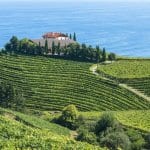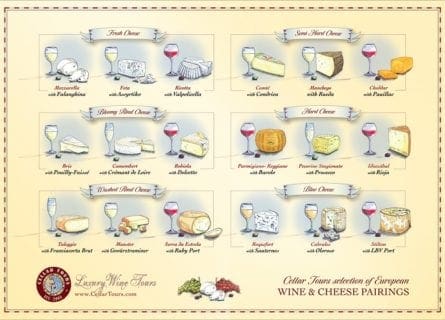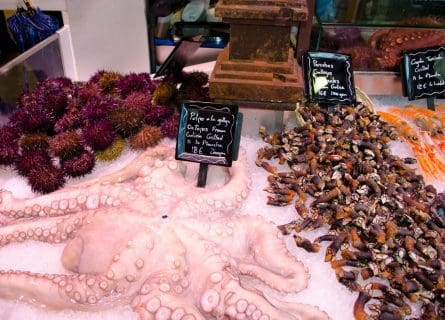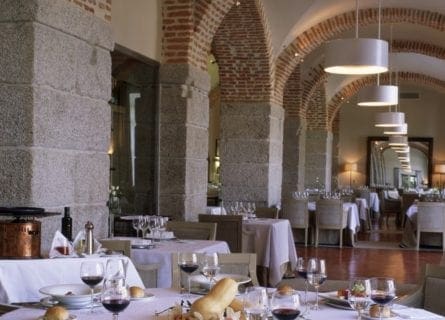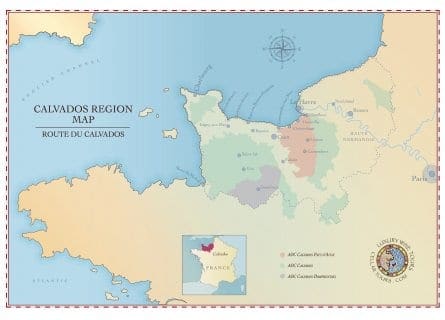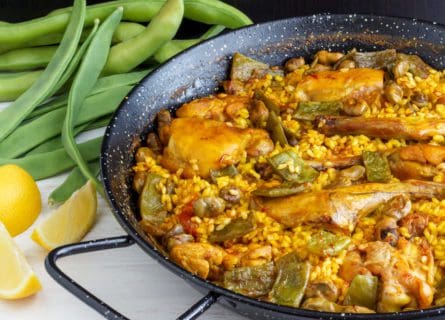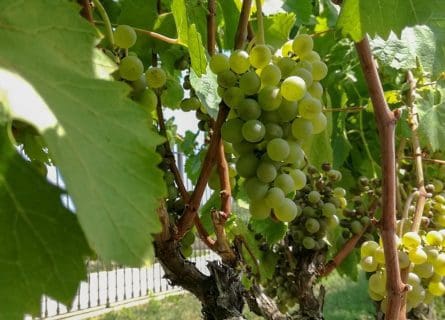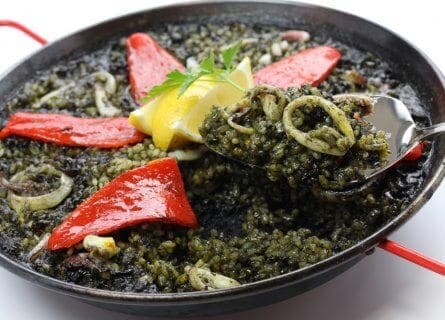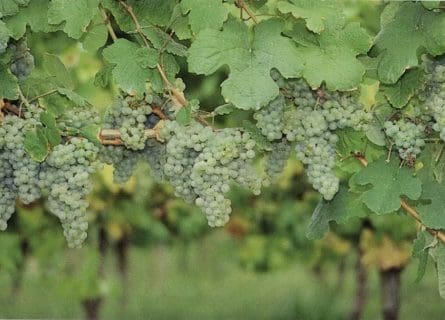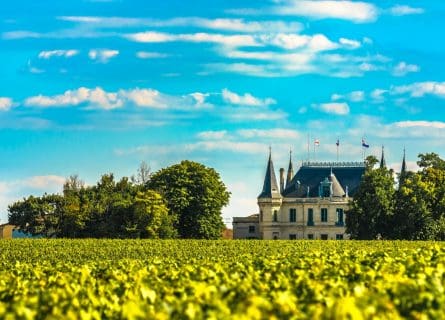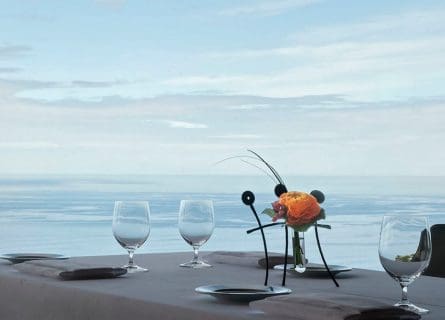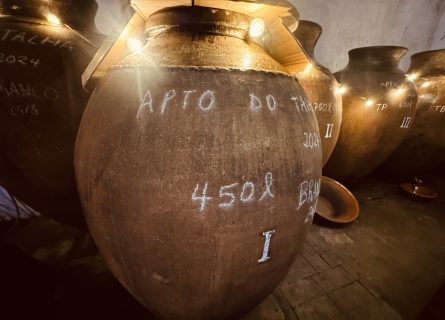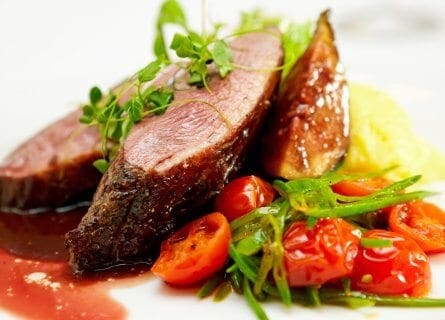Irouléguy & Jurançon Wine Regions Guide
Explore the Hidden Gems of France: The Unique Wines of Irouléguy and Jurançon
EXPLORE ALL OUR SOUTH WEST FRANCE WINE REGION GUIDE
Last updated: April 4, 2025
Introduction
Irouléguy and Jurançon are the pride of southwestern France: two highly individual and dynamic appellations that produce a unique range of red, white, and rosé wines. Indeed, if you have limited your experience of France to the vineyards of Bordeaux and Burgundy, the Pyrenees’ esoteric flavors and snow-capped scenery will likely shock you.
Of course, there are no grandiose chateaux or any blue-chip labels in this part of the world. Yet a great deal captivates and titillates, not least the late-harvest dessert wines of Jurançon and the mouthwateringly crisp fruit of Irouléguy Tannat.
Discover More About French Wine
History
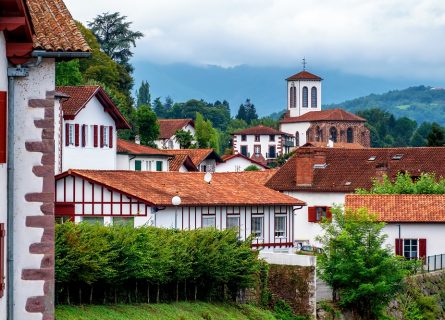
The history of the French Basque Country and the Pyrenees is a curious mix of isolationism and internationalism. According to linguists, Basque is one of the world’s oldest languages – unrelated to any other tongue on earth. It is also the only language in southwest Europe to resist assimilation into Roman Latin and its derivatives; the Romans failed to assert their authority over the “Vascones” during the conquest of Gaul.
Eventually, the Basques established a permanent base in southwestern France in the 6th century, sheltering in the mountains and earning a living from farming and fishing.
Vineyards and Vandal Raids
Meanwhile, the province of Béarn became part of the Western Roman Empire in the last century BC. A sea of vines soon enveloped the region of Aquitania Tertia, stretching from the foothills of the Pyrenees to the outskirts of Bordeaux.
But, after Rome’s hegemony disintegrated in the 5th century, the armies of the Vandals and Visigoths repeatedly attacked Béarn. However, Merovingian and Carolingian knights eventually conquered it and encouraged the spread of Christianity in the Dark Ages.
Monastic Winemaking
Meanwhile, the Basques emerged from the turbulent Middle Ages in a relatively strong position, maintaining considerable local autonomy until the late 1700s. As elsewhere, Catholic monks managed and organized viticulture, producing very tart, light wines at the famous Roncesvalles abbey.
Some of their first customers were devout Christians undertaking the Camino de Santiago pilgrimage in reverence to St James. Further east, the vineyards of Jurançon started their revival in the 1300s, as the increasingly wealthy town of Pau saw its population rise significantly in the 14th and 15th centuries.
Such was the renown of Jurançon that, in the late 1500s, King Henri II of Navarra (just over the border) purchased a vineyard in the zone. The sweet wines of Jurançon had become an international phenomenon, much loved by the French aristocracy.
Renaissance of Irouléguy and Jurançon
Sadly, both Irouléguy and Jurançon saw massive declines in the 19th century, starting with the arrival of phylloxera and culminating in the economic slump of the post-war environment. Many younger growers left the regions to find better conditions in the cities – the area under vine in Jurançon, for example, shrank from 6000 hectares in the late 1800s to around 600 by the 1950s.
However, a revival began toward the end of the 20th century, as rising prosperity allied to a renewed interest in indigenous grapes gave both appellations a shot in the arm. Today, they remain ‘untainted’ by international varieties like Merlot, preferring to maintain their historical traditions to the last.
Geography and terroir
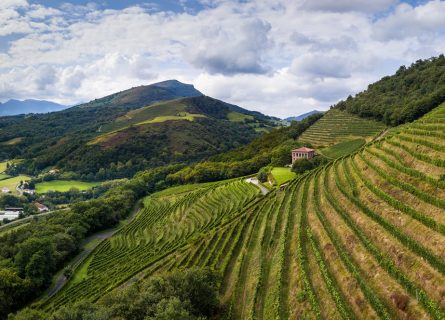
Extending from the western foothills of the Pyrenees to within touching distance of the Spanish border, the landscapes of Irouléguy and Jurançon have no equal in France. In Jurançon, lush green valleys and steeper hillsides host a myriad of agricultural crops, including, of course, the precious vines of the appellation.
Typically, the best sites are on the higher slopes of the foothills, where diurnal temperature variation and frequent gusts of mountain air help maintain the grapes’ acidity and prevent fungal diseases in the fall. Climatically, the region tends to enjoy temperate summers with a moderate annual rainfall of 1200mm. It is a most advantageous place to make high-quality wine.
Meanwhile, the small enclave of Irouléguy is at the foot of the Pyrenees, a stone’s throw away from the charming town of St-Jean Pied De Port. Historically, it was the last stop in France for pilgrims heading south over the Spanish border, a mere 8 kilometers away!
Today, it produces France’s only Basque wine, using fruit grown on the lower slopes and valleys that lie to the west of the jagged peaks of the mountains. Like Jurançon, the climate exhibits both maritime and continental influences; the most favored climats (vineyard sites) find shelter from the Atlantic squalls that can bring torrential rain to Irouléguy during the fall and winter months.
Elevation and Terroir Diversity
Moreover, the steep, terraced vineyards of the zone can rise to over 600 meters above sea level in certain places, creating a significant temperature difference between day and night. White varieties, particularly Petit Manseng and Courbu, are most suited to these higher-elevation terroirs.
Soil Composition and Vineyard Character
The soils of both appellations are no less varied. However, there is a great deal of limestone in both Jurançon and Irouléguy; the former is famous for a local variant known as “Poudingue de Jurançon,” a combination of limestone-clay and stone fragments. It is the dominant soil type in the northeastern section of the appellation, while sedimentary rock (flysch) and sandstone are much more common in the south.
Likewise, the lower slopes of Irouléguy are rich in sandstone and limestone subsoils, which are porous yet free-draining terroirs that retain just enough moisture in the drier months. These south-facing terraces, rising to 400 meters above the Atlantic, produce fresh and energetic expressions of the local grapes, not least the aptly named Tannat and rare Petit Courbu.
Winemaking and regional classifications
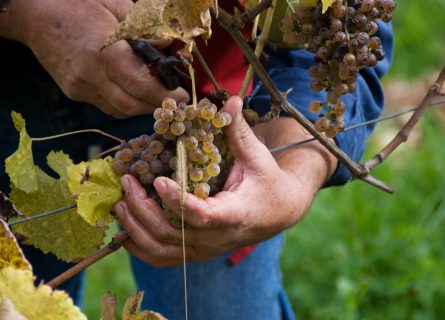
Jurançon is responsible for one of France’s most distinctive white wines, made in various sweetness levels and weights. Historically, dessert wines were the mainstay of life here, but changes in fashion have inevitably led to a massive swing toward a dry style known as Jurançon Sec.
Gros Manseng’s Modern Appeal
As a rule, winemakers prefer to use the larger, earlier-ripening Gros Manseng berries for their dry whites, fermented in a manner that will be instantly familiar to aficionados of Kiwi Sauvignon Blanc. Thus, they handle the fruit in a very sensitive and timely manner, vinifying it at low temperatures in stainless steel to extract every last bit of aroma and flavor from the grapes.
A touch of oak aging can really flatter Gros Manseng, adding another dimension to the grape’s citrus and stone fruit profile. Occasionally, it will be blended with Courbu and/or Petit Courbu, bringing welcome freshness and perfume to the final cuvée.
Petit Manseng’s Rich Legacy
Nevertheless, many regard Petit Manseng as the seminal grape variety of Jurançon. Its smaller, thicker-skinned berries are rich in aromatic and flavor compounds; growers often harvest grapes in late November or even December, allowing the sugars to concentrate as the skins shrivel to desiccated pulps. These sweet moelleux wines are made through the conventional method: the berries are crushed and pressed before the juice is subject to a clarification – either through cold-settling or filtration.
The wines are then fermented in stainless steel, concrete, or possibly oak vats; lower-temperature vinifications are preferred today, as they produce fruitier and more lively wines. They are racked, fined, and filtered before bottling in the following spring, generally in April.
However, certain wines will be matured in oak – sometimes a mixture of old and new – for at least 12-14 months. Therefore, one encounters a pleasing diversity of styles in Jurançon, ranging from fruit-driven, minerally expressions to very opulent, nutty wines with aromas of buttered toast, straw, honeysuckle, and spice.
Irouléguy’s Diverse Offerings
Irouléguy, meanwhile, is France’s premier source of razor-sharp white, red, and rosé wines. Tannat epitomizes this characteristic firmness and super-fresh acidity, well-named for its imposing tannic structure and potent fruit. To soften this raw power, winemakers often blend in a certain percentage of Cabernet Franc, adding perfume and much-needed texture. Historically, most producers favored a long maceration and maturation in old wood, creating a red wine that could take years to become pleasant to drink.
But modern consumers have little patience for such astringent monsters, so fermentation times have been reduced. At the same time, new oak (sometimes combined with micro-oxygenation) is used to soften the harsh tannic edge of old. The best examples are very fine reds: aromatic, flavorful, and deliciously fresh. Rather like top Irouléguy whites (typically a blend of Courbu, Petit, and Gros Manseng), they withstand comparisons to the best of Graves Blanc, albeit the bouquet is very different. And, best of all, the price is always right.
Facts & Figures
Key wine styles
- Medium-bodied red and rosé wines; dry whites; late-harvest dessert wines
Appellation structure
- Irouléguy AOC
- Jurançon AOC
Hectares under vine
- Irouléguy: 240
- Jurançon: 1200
Average annual production
- Irouléguy: One million bottles per annum
- Jurançon: 44,000 hectoliters per annum
The lowdown
Over the past 15 years, the global wine industry has looked nervously at ever-increasing alcohol degrees. This is undesirable for two reasons: the consumer pendulum has swung decidedly in favor of lighter styles with moderate abv, and high alcohol can muddy the flavors and blur the aromas.
Thus, the wines lose definition and complexity, becoming nothing more than fruit bomb caricatures. There is, of course, still a market for such labels, impressive (at least at first) in their power and brute force. But this style of wine can quickly become boring and monotonous to drink.
Elevation and Climate
Thankfully, there are plenty of options available to winemakers. One is to seek higher ground and the concomitant benefits of diurnal temperature variation; this is increasingly a top priority for growers in Irouléguy and Jurançon. Their mission is to beat the vagaries of climate change or at least to soften its impact on their creations.
So far, it appears to be working – lively acidity can still be detected in most wines, partially due to the favorable climate and elevation. Local winemakers are passionately committed to terroir: they want minerality in their wines and a sense of place. In the Pyrenees, soil is not simply the stuff that holds the vines upright!
Terroir-Driven Finesse
In recent years, the words “finesse” and “balance” are all the rage: producers from New Zealand to England talk up their soils and climate like never before. Yet the truth is that this is old news for growers in Irouléguy and Jurançon; they wrote the book on making clear, focused, and defined expressions of local grapes and terroirs. For an authentic taste of the southwest, this is ground zero.
Key Grape Varietals
-
Courbu
Courbu Blanc is a white grape varietal used to make dry and sweet wines in the Irouleguy of South West France.
Find out more -
Petit Courbu
Petit Courbu, a white wine grape from France's South-West, has recently revived, reflecting a trend towards local varietals. Distinguished from its close relative Courbu Blanc by slight leaf color differences, it's known for adding a honeyed, citrus note to wines from Pacherenc du Vic-Bilh, Jurançon, and Irouléguy. While Petit Courbu occasionally stars in varietal wines, it's often blended with grapes like Arrufiac, the Mansengs, and Sauvignon Blanc, enhancing the region's whites, especially in Saint-Mont.
-
Gros Manseng
Explore Gros Manseng, a captivating white wine grape flourishing in South West France's Jurançon region. Unveil its delightful flavors!
Find out more -
Petit Manseng
Petit Manseng is a white grape grown mainly in the South West of France that produces high-quality sweet wines. It's one of France's best-kept wine secrets.
Find out more -
Cabernet Franc
Cabernet Franc grape is a close relative of Merlot and Cabernet Sauvignon and is the principal blending grape used in Bordeaux.
Find out more -
Tannat
Tannat, a robust grape from the Basque country, is famed for producing rich, rustic wines in Madiran, France, and has found notable success in Uruguay, where it's adapted to create softer wines. Central to Madiran AOC, it requires over 50% in blends, with modern techniques like micro-oxygenation used to enhance its approachability.
Irouléguy & Jurançon gastronomy
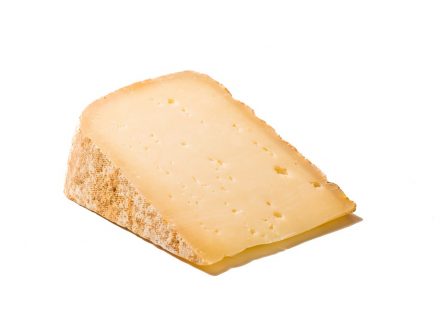
Both regions can claim a solid gastronomic tradition: Basque seafood (caught that morning in the Atlantic) is among Europe’s best. At the same time, Pyrenean black pork and freshwater crayfish are the perfect foil to a glass of Jurançon Sec. Meanwhile, Ossau-Iraty is a delectable local cheese made from sheep’s milk. Its firm texture and creamy flavor make it an ideal accompaniment to Irouléguy Blanc.
Wineries Recommended by Cellar Tours
Irouléguy AOC
Jurançon AOC
-
Clos Joliette
-
Chateau Jolys
Read more -
Domaine Bellegarde
Read more -
Domaine de Souch
-
Louis-Benjamin
Further Reading: Discover More Related Blog Content
More information
If you would like us to customize an exclusive luxury tour, contact us and let us know your travel plans. We offer luxury food and wine tours for private groups of a minimum two guests. In addition, all of our private, chauffeured tours are available year-round upon request.

